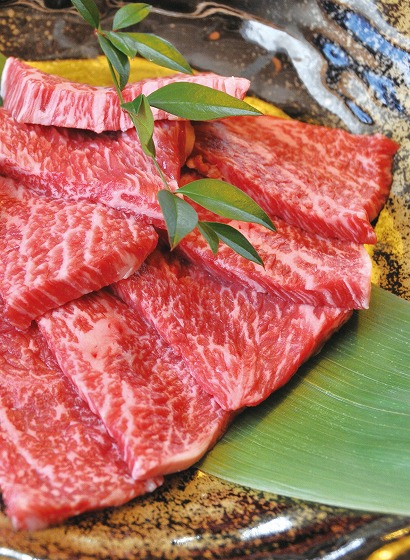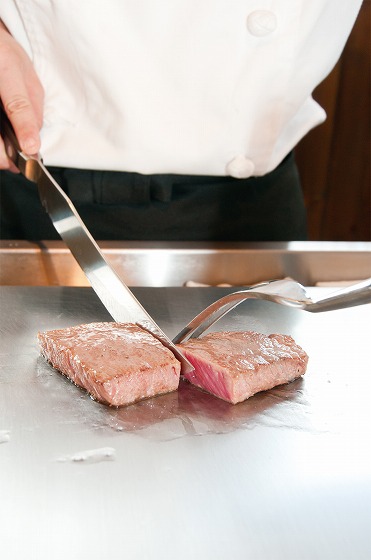2019 / 07 / 09
Food
Takachiho Beef
Takachiho beef is a locally raised, locally enjoyed specialty. The beef comes from Japanese black cattle who graze on locally produced feed and drink from the spring water of Mt. Sobo. Takachiho beef has gained national recognition in Japan for its quality and took the Prime Minister’s Award in 2007 at the Ninth National Japanese Beef Ability Expo, commonly known as the “Wagyu Olympics.” Takachiho’s marbled meat is particularly renowned for its high-quality fat distribution and tenderness.
Takachiho beef is strictly defined as Japanese “Wagyu” beef that is A4 range quality or higher from cows born and raised within select districts of the Takachiho area. The cows must also be fed and processed by specific Takachiho livestock organizations. Out of about 500,000 cows in the area, 600 are groomed each year for Miyazaki beef. Of these, only 200 become “Takachiho beef.” The amount produced yearly is limited, so it’s rarely shipped to outside locations. Instead, it has become a Takachiho specialty that draws fans from around the nation and abroad to local restaurants, such as Yakiniku Hatsuei and Nagomi. (Note: Nagomi also sells Takachiho beef in its deli.)
Outside Nagomi are two cow statues that attest to Takachiho’s cattle-raising heritage. One commemorates a famous breeding bull named Yasuhirago, who is said to have sired over 220,000 cattle throughout western Japan. The other statue is Yasuhirago’s mother. In the Takachiho area, work cows have been raised for generations. Systematic efforts to improve and breed better stock began in earnest in the Meiji period (1868–1912), during which the initial focus was on milk production. Breeding bulls such as Yasuhirago were exchanged with other regions including Kobe and Osaka in order to foster favorable traits. The Takachiho area began to raise beef cattle in the Showa period (1926–1989) and has carried on with this tradition ever since with great care. The generations of Takachiho cattle are said to be so well-documented that local cows’ lineage can be traced back with greater accuracy than can that of the townspeople.
Takachiho beef is strictly defined as Japanese “Wagyu” beef that is A4 range quality or higher from cows born and raised within select districts of the Takachiho area. The cows must also be fed and processed by specific Takachiho livestock organizations. Out of about 500,000 cows in the area, 600 are groomed each year for Miyazaki beef. Of these, only 200 become “Takachiho beef.” The amount produced yearly is limited, so it’s rarely shipped to outside locations. Instead, it has become a Takachiho specialty that draws fans from around the nation and abroad to local restaurants, such as Yakiniku Hatsuei and Nagomi. (Note: Nagomi also sells Takachiho beef in its deli.)
Outside Nagomi are two cow statues that attest to Takachiho’s cattle-raising heritage. One commemorates a famous breeding bull named Yasuhirago, who is said to have sired over 220,000 cattle throughout western Japan. The other statue is Yasuhirago’s mother. In the Takachiho area, work cows have been raised for generations. Systematic efforts to improve and breed better stock began in earnest in the Meiji period (1868–1912), during which the initial focus was on milk production. Breeding bulls such as Yasuhirago were exchanged with other regions including Kobe and Osaka in order to foster favorable traits. The Takachiho area began to raise beef cattle in the Showa period (1926–1989) and has carried on with this tradition ever since with great care. The generations of Takachiho cattle are said to be so well-documented that local cows’ lineage can be traced back with greater accuracy than can that of the townspeople.






